-
1 EXECUTIVE SUMMARY
-
Market Attractiveness Analysis
- Global Microbial Lipase Market, by Source
- Global Microbial Lipase Market, by Form
- Global Microbial Lipase Market, by Application
- Global Microbial Lipase Market, by Region
-
MARKET INTRODUCTION
-
Definition
-
Scope of the Study
-
Market Structure
-
Key Buying Criteria
-
Macro Factor Indicator Analysis
-
RESEARCH METHODOLOGY
-
Research Process
-
Primary Research
-
Secondary Research
-
Market Size Estimation
-
Forecast Model
-
List of Assumptions
-
MARKET DYNAMICS
-
Introduction
-
Drivers
-
Restraints
-
Opportunities
-
Challenges
-
MARKET FACTOR ANALYSIS
-
Value Chain Analysis
-
Supply Chain Analysis
-
Porter’s Five Forces Model
- Bargaining Power of Suppliers
- Bargaining Power of Buyers
- Threat of New Entrants
- Threat of Substitutes
- Intensity of Rivalry
-
GLOBAL MICROBIAL LIPASE MARKET, BY SOURCE
-
Introduction
-
Fungi
- Fungi: Market Estimates & Forecast, by Region/Country, 2020-2027
-
Bacteria
- Bacteria: Market Estimates & Forecast, by Region/Country, 2020-2027
-
GLOBAL MICROBIAL LIPASE MARKET, BY FORM
-
Introduction
-
Liquid
- Liquid: Market Estimates & Forecast, by Region/Country, 2020-2027
-
Powder
- Powder: Market Estimates & Forecast, by Region/Country, 2020-2027
-
GLOBAL MICROBIAL LIPASE MARKET, BY APPLICATION
-
Introduction
-
Cleaning Agents
- Cleaning Agents: Market Estimates & Forecast, by Region/Country, 2020-2027
-
Animal Feed
- Animal Feed: Market Estimates & Forecast, by Region/Country, 2020-2027
-
Dairy Products
- Dairy Products: Market Estimates & Forecast, by Region/Country, 2020-2027
-
Bakery Products
- Bakery Products: Market Estimates & Forecast, by Region/Country, 2020-2027
-
Confectionery
- Confectionery: Market Estimates & Forecast, by Region/Country, 2020-2027
-
Others
- Others: Market Estimates & Forecast, by Region/Country, 2020-2027
-
GLOBAL MICROBIAL LIPASE MARKET, BY REGION
-
Introduction
-
North America
- Market Estimates & Forecast, by Source, 2020-2027
- Market Estimates & Forecast, by Form, 2020-2027
- Market Estimates & Forecast, by Application, 2020-2027
- Market Estimates & Forecast, by Country, 2020-2027
- US
- Canada
- Mexico
-
Europe
- Market Estimates & Forecast, by Source, 2020-2027
- Market Estimates & Forecast, by Form, 2020-2027
- Market Estimates & Forecast, by Application, 2020-2027
- Market Estimates & Forecast, by Country, 2020-2027
- Germany
- UK
- France
- Spain
- Italy
- Rest of Europe
-
Asia-Pacific
- Market Estimates & Forecast, by Source, 2020-2027
- Market Estimates & Forecast, by Form, 2020-2027
- Market Estimates & Forecast, by Application, 2020-2027
- Market Estimates & Forecast, by Country, 2020-2027
- China
- Japan
- India
- Australia & New Zealand
- Rest of Asia-Pacific
-
Rest of the World
- Market Estimates & Forecast, by Source, 2020-2027
- Market Estimates & Forecast, by Form, 2020-2027
- Market Estimates & Forecast, by Application, 2020-2027
- Market Estimates & Forecast, by Region, 2020-2027
- South America
- Middle East
- Africa
-
COMPETITIVE LANDSCAPE
-
Introduction
-
Competitive Benchmarking
-
Development Share Analysis
-
Key Developments & Growth Strategies
-
COMPANY PROFILES
-
Novozymes AS (Denmark)
- Company Overview
- Financial Overview
- Products Offered
- Key Developments
- SWOT Analysis
- Key Strategies
-
Koninklijke DSM N.V. (Netherlands)
- Company Overview
- Financial Overview
- Products Offered
- Key Developments
- SWOT Analysis
- Key Strategies
-
Chr. Hansen A/S (Denmark)
- Company Overview
- Financial Overview
- Products Offered
- Key Developments
- SWOT Analysis
- Key Strategies
-
Amano Enzyme USA Co., Ltd. (US)
- Company Overview
- Financial Overview
- Products Offered
- Key Developments
- SWOT Analysis
- Key Strategies
-
Associated British Foods Limited (UK)
- Company Overview
- Financial Overview
- Products Offered
- Key Developments
- SWOT Analysis
- Key Strategies
-
DowDupont Inc. (US)
- Company Overview
- Financial Overview
- Products Offered
- Key Developments
- SWOT Analysis
- Key Strategies
-
Advanced Enzymes (India)
- Company Overview
- Financial Overview
- Products Offered
- Key Developments
- SWOT Analysis
- Key Strategies
-
Enzyme Development Corporation (US)
- Company Overview
- Financial Overview
- Products Offered
- Key Developments
- SWOT Analysis
- Key Strategies
-
Creative Enzymes (US)
- Company Overview
- Financial Overview
- Products Offered
- Key Developments
- SWOT Analysis
- Key Strategies
-
Meito Sangyo Co., Ltd. (Japan)
- Company Overview
- Financial Overview
- Products Offered
- Key Developments
- SWOT Analysis
- Key Strategies
-
Aumgene Biosciences (India)
- Company Overview
- Financial Overview
- Products Offered
- Key Developments
- SWOT Analysis
- Key Strategies
-
Biocatalysts Ltd (UK)
- Company Overview
- Financial Overview
- Products Offered
- Key Developments
- SWOT Analysis
- Key Strategies
-
APPENDIX
-
General Forms & References
-
List of Abbreviation
-
-
LIST OF TABLES
-
Global Microbial Lipase Market, by Region, 2020–2027 (USD Million)
-
Global Microbial Lipase Market, by Source, 2020–2027 (USD Million)
-
Global Microbial Lipase Market, by Form, 2020–2027 (USD Million)
-
Global Microbial Lipase Market, by Application, 2020–2027 (USD Million)
-
North America: Microbial Lipase Market, by Country, 2020–2027 (USD Million)
-
North America: Microbial Lipase Market, by Source, 2020–2027 (USD Million)
-
North America: Microbial Lipase Market, by Form, 2020–2027 (USD Million)
-
North America: Microbial Lipase Market, by Application, 2020–2027 (USD Million)
-
US: Microbial Lipase Market, by Source, 2020–2027 (USD Million)
-
US: Microbial Lipase Market, by Form, 2020–2027 (USD Million)
-
US: Microbial Lipase Market, by Application, 2020–2027 (USD Million)
-
Canada: Microbial Lipase Market, by Source, 2020–2027 (USD Million)
-
Canada: Microbial Lipase Market, by Form, 2020–2027 (USD Million)
-
Canada: Microbial Lipase Market, by Application, 2020–2027 (USD Million)
-
Mexico: Microbial Lipase Market, by Source, 2020–2027 (USD Million)
-
Mexico: Microbial Lipase Market, by Form, 2020–2027 (USD Million)
-
Mexico: Microbial Lipase Market, by Application, 2020–2027 (USD Million)
-
Europe: Microbial Lipase Market, by Country, 2020–2027 (USD Million)
-
Europe: Microbial Lipase Market, by Source, 2020–2027 (USD Million)
-
Europe: Microbial Lipase Market, by Form, 2020–2027 (USD Million)
-
Europe: Microbial Lipase Market, by Application, 2020–2027 (USD Million)
-
Germany: Microbial Lipase Market, by Source, 2020–2027 (USD Million)
-
Germany: Microbial Lipase Market, by Form, 2020–2027 (USD Million)
-
Germany: Microbial Lipase Market, by Application, 2020–2027 (USD Million)
-
France: Microbial Lipase Market, by Source, 2020–2027 (USD Million)
-
France: Microbial Lipase Market, by Form, 2020–2027 (USD Million)
-
France: Microbial Lipase Market, by Application, 2020–2027 (USD Million)
-
Italy: Microbial Lipase Market, by Source, 2020–2027 (USD Million)
-
Italy: Microbial Lipase Market, by Form, 2020–2027 (USD Million)
-
Italy: Microbial Lipase Market, by Application, 2020–2027 (USD Million)
-
Spain: Microbial Lipase Market, by Source, 2020–2027 (USD Million)
-
Spain: Microbial Lipase Market, by Form, 2020–2027 (USD Million)
-
Spain: Microbial Lipase Market, by Application, 2020–2027 (USD Million)
-
UK: Microbial Lipase Market, by Source, 2020–2027 (USD Million)
-
UK: Microbial Lipase Market, by Form, 2020–2027 (USD Million)
-
UK: Microbial Lipase Market, by Application, 2020–2027 (USD Million)
-
Rest of Europe: Microbial Lipase Market, by Source, 2020–2027 (USD Million)
-
Rest of Europe: Microbial Lipase Market, by Form, 2020–2027 (USD Million)
-
Rest of Europe: Microbial Lipase Market, by Application, 2020–2027 (USD Million)
-
Asia-Pacific: Microbial Lipase Market, by Country, 2020–2027 (USD Million)
-
Asia-Pacific: Microbial Lipase Market, by Source, 2020–2027 (USD Million)
-
Asia-Pacific: Microbial Lipase Market, by Form, 2020–2027 (USD Million)
-
Asia-Pacific: Microbial Lipase Market, by Application, 2020–2027 (USD Million)
-
China: Microbial Lipase Market, by Source, 2020–2027 (USD Million)
-
China: Microbial Lipase Market, by Form, 2020–2027 (USD Million)
-
China: Microbial Lipase Market, by Application, 2020–2027 (USD Million)
-
India: Microbial Lipase Market, by Source, 2020–2027 (USD Million)
-
India: Microbial Lipase Market, by Form, 2020–2027 (USD Million)
-
India: Microbial Lipase Market, by Application, 2020–2027 (USD Million)
-
Japan: Microbial Lipase Market, by Source, 2020–2027 (USD Million)
-
Japan: Microbial Lipase Market, by Form, 2020–2027 (USD Million)
-
Japan: Microbial Lipase Market, by Application, 2020–2027 (USD Million)
-
Rest of Asia-Pacific: Microbial Lipase Market, by Source, 2020–2027 (USD Million)
-
Rest of Asia-Pacific: Microbial Lipase Market, by Form, 2020–2027 (USD Million)
-
Rest of Asia-Pacific: Microbial Lipase Market, by Application, 2020–2027 (USD Million)
-
Rest of the World (RoW): Microbial Lipase Market, by Country, 2020–2027 (USD Million)
-
Rest of the World (RoW): Microbial Lipase Market, by Source, 2020–2027 (USD Million)
-
Rest of the World (RoW): Microbial Lipase Market, by Form, 2020–2027 (USD Million)
-
Rest of the World (RoW): Microbial Lipase Market, by Application, 2020–2027 (USD Million)
-
South America: Microbial Lipase Market, by Source, 2020–2027 (USD Million)
-
South America: Microbial Lipase Market, by Form, 2020–2027 (USD Million)
-
South America: Microbial Lipase Market, by Application, 2020–2027 (USD Million)
-
Middle East: Microbial Lipase Market, by Source, 2020–2027 (USD Million)
-
Middle East: Microbial Lipase Market, by Form, 2020–2027 (USD Million)
-
Middle East: Microbial Lipase Market, by Application, 2020–2027 (USD Million)
-
Africa: Microbial Lipase Market, by Source, 2020–2027 (USD Million)
-
Africa: Microbial Lipase Market, by Form, 2020–2027 (USD Million)
-
Africa: Microbial Lipase Market, by Application, 2020–2027 (USD Million)
-
LIST OF FIGURES
-
Global Microbial Lipase Market Segmentation
-
Forecast Research Methodology
-
Five Forces Analysis of the Global Microbial Lipase Market
-
Value Chain of the Global Microbial Lipase Market
-
Share of the Global Microbial Lipase Market in 2020, by Country (%)
-
Global Microbial Lipase Market, by Region, 2020–2027,
-
Global Microbial Lipase Market Size, by Source, 2020
-
Share of the Global Microbial Lipase Market, by Source, 2020–2027 (%)
-
Global Microbial Lipase Market Size, by Form, 2020
-
Share of the Global Microbial Lipase Market, by Form, 2020–2027 (%)
-
Global Microbial Lipase Market Size, by Application, 2020
-
Share of the Global Microbial Lipase Market, by Application, 2020–2027 (%)
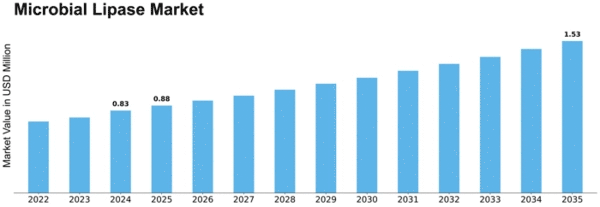


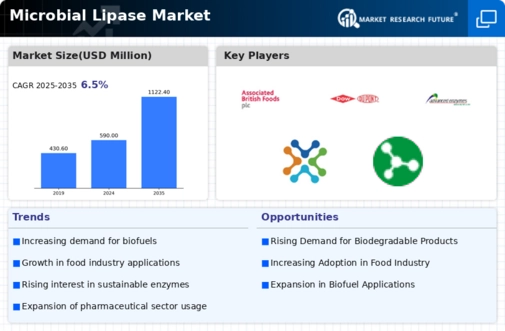
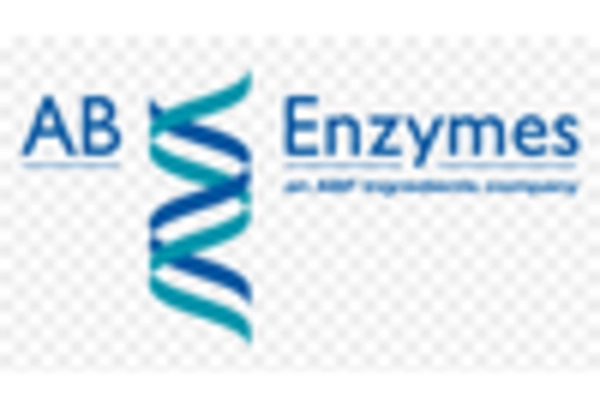
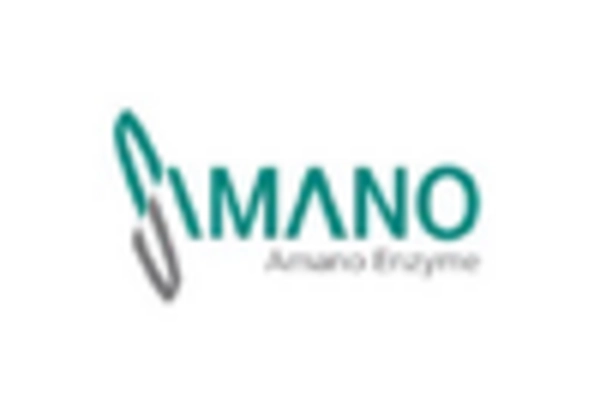

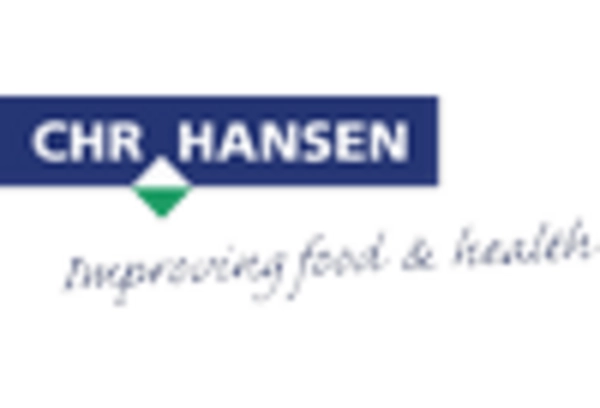











Leave a Comment